"Sun Gun"
by Walter Graff
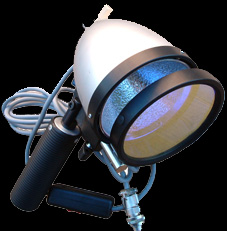
Over the years I’ve used every imaginable “sun gun” made, from the original GE “sun gun” in the 80’s which looked something like a headlight out of the 30’s but produced a lot of light (above), to an LED version I built myself. And in the end, regardless of what I am using, the secret to using it well is about not making it look like a headlight in someone’s face.
Currently I use a Frezzolini 50 watt MR16 on-camera light for most of what I do. Actually, I carry that and a Anton Bauer 20 watt light in my kit and use both depending on my need. Images are towards the end of this article. Any of the sun guns I see on the market will do the job.
Obviously the Anton Bauer light isn’t as bright being it's 20 watts but that can be good too when the situation arises. The situation I mostly use the Anton Bauer light is for supplementation when the room is well lit with fluorescent fixtures from the ceiling and I need just a bit of light to fill in the shadows. The Anton Bauer light fills in the shadows nicely. In addition I have a flip down door that I attached a piece of 216 diffusion to the help take the edge off the light. Even though it’s 20 watts, from 5 feet it can still look like the train is pulling into the station so softening it helps.
I tend to use a sun gun less as a direct light and often as a bounce. Of course if I’m doing man-on-the-street at night, its tougher to soften it all up, but not impossible.
I recently finished a new series for the Fine Living Channel. It’s called “Auction Adventure”. I was often faced with the task of lighting my talent while he was one the floor of an auction house. Set-ups needed to be quick, and there was no effective place, and in many cases room to place fixtures so my sun gun became my prime fixture for lighting.
In the photos that follow I show you what I use and examples of how I use it with hopes that you will understand a sun gun is your friend, not your enemy. You just have to learn ho to control it.
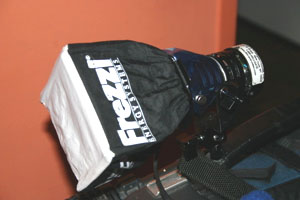
My favorite light and accessory is shown above. This is a Frezzolini 50 watt fixture. With this soft box, I can fill in my talent without making it look like the 4:01 is pulling into the station. But the secret isn't in the light but how you use it.
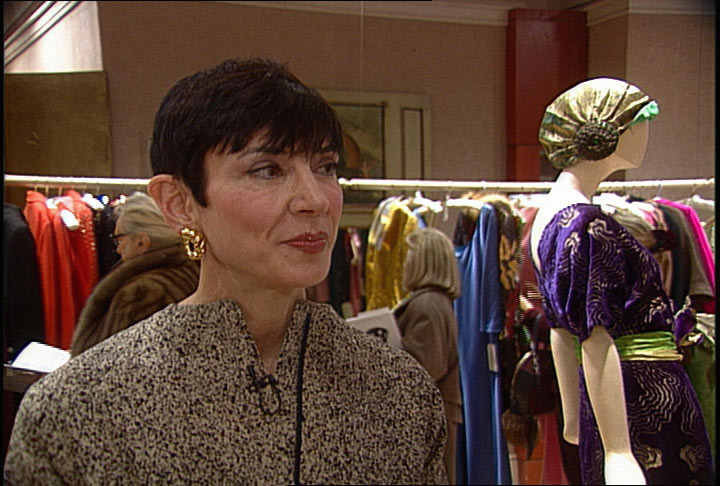
The results of using the light above? A sun gun doesn’t have to look like a sun gun. Here is a frame from the video. Notice that while the background has hot elements from the rooms natural lighting, the women’s face is evenly lit. Between the light that spills from the natural ceiling fixtures and a well-balanced camera light, I got a nice soft effect that is pleasing to the eyes. So how do I keep it from looking like a flashlight? With the understanding that I am in control of the light, the light does not control me. Sometimes I simply need to take an extra step back to make the difference between a flashlight and a fill. I love the soft look that the little soft box on my Frezzi gives me. My suggestion is to make sure you have some diffusion options for your light. Because sometimes 216 is too much diffusion and a more transparent frost diffusion might be better.
And don’t feel like you have to stand three feet in front of a person. Sometimes four feet makes all the difference in how that light appears. Remember you are in control of the light, it is not in control of you. So when you look in the viewfinder and see a bright spot, don't say oh no, step back a bit or adjust the iris to compensate if you can't step back. Use your zebras set at 70-80 units as a guide to facial exposure. When you see it start to peak, you know you have to iris down to compensate or step back slightly from your talent. Faces start to get ugly at 80 units of video so I use 75 as a reference. I even have a flexible arm with a piece of foam core that I sometimes clip to the camera and bounce my light into making a little reflector on the camera for certain situations. That is another option I keep handy.
Bottom line is that sometimes one solution isn’t always enough. But most importantly, don’t let the light dictate how it looks, rather use the light to dictate how you want it to look. You wouldn’t just turn on a 1k light to light someone, but would do what you had to in order to adjust it properly. People forget that a camera light has the same ability. Perhaps because we lock it to the camera that we think that’s all we can do. But you should have as much control over your camera light as you do any other light in your kit.
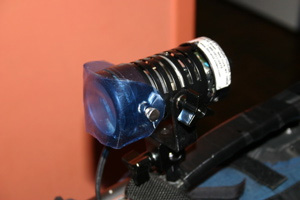
While the companies that make these lights offer all sorts of accessories, I find noting better than my own piece of CTB for shots where I have the ability to balance color temperature better. In the shot above I have four pieces of quarter CTB ganged up. If I need a warmer look in the 4000k range I simply slip two sheets of the CTB up. If I need 3000k I slide them all up away from the light. I cut holes in the sides and fastened them to the screws on the side of the fixture for a more permanent filter.
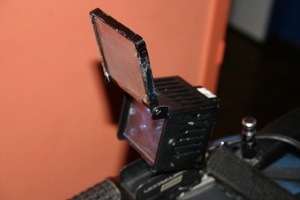
Here is my Anton Bauer light. The flip-up door is their diffuser but I never thought it diffused enough so I taped 216 inside it to help diffuse more. It’s a good light when you need a little but don’t want to overpower someone.
Here’s an answer to a question I am often asked, “What light can I use that will work well plugged into my DVX100 or similar camera?” My answer is none. I’d rather see someone with a Bescor light and battery attached to his or her belt than one of those DV camera lights that suck power from your camera battery. Why take chances on not having enough juice? Regardless of what light you use, make sure its soft, and then don’t stand 2 feet from someone. Rather stand back a bit till the light becomes a softer fill. Also, a sun gun can look nice if you learn to look at what it’s doing with your eye, not necessarily through the viewfinder. That’s a secret to using one well. Learn to shoot with both eyes. Watch pros on TV. Seasoned pros have both eyes open and know how to switch focus from one eye to the other. You should use the free eye for reality reference and your viewfinder eye for confidence. Together you’ll learn to make much nicer pictures.
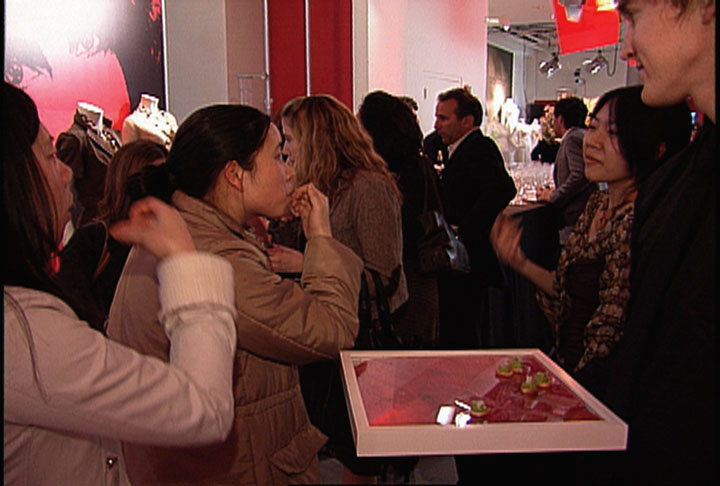
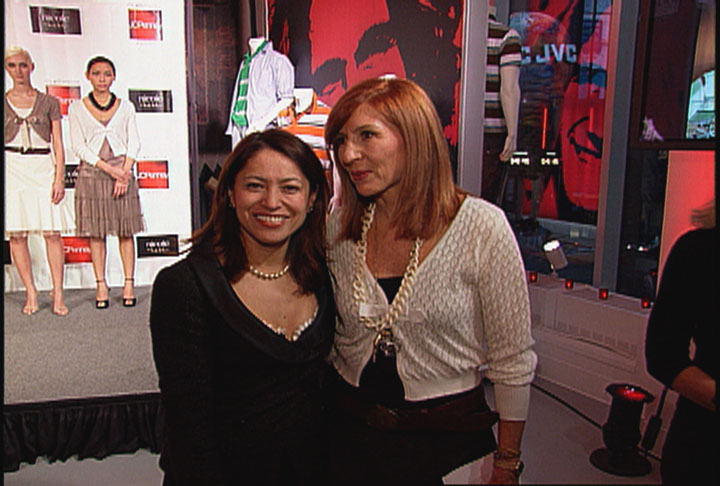
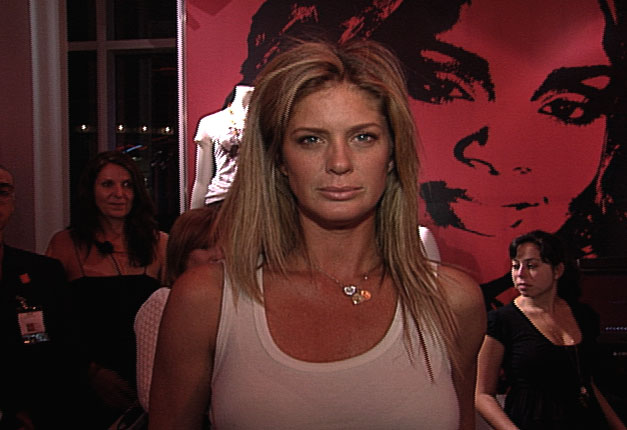
Walter Graff
Copyright 2013 by Walter Graff. This article may be circulated and shared as long as the following reference is made: 'This article appears courtesy of Walter Graff- http://www.waltergraff.com'
Please don't hesitate to send me an e-mail if you have any questions or comments please e-mail me at Walter@waltergraff.com